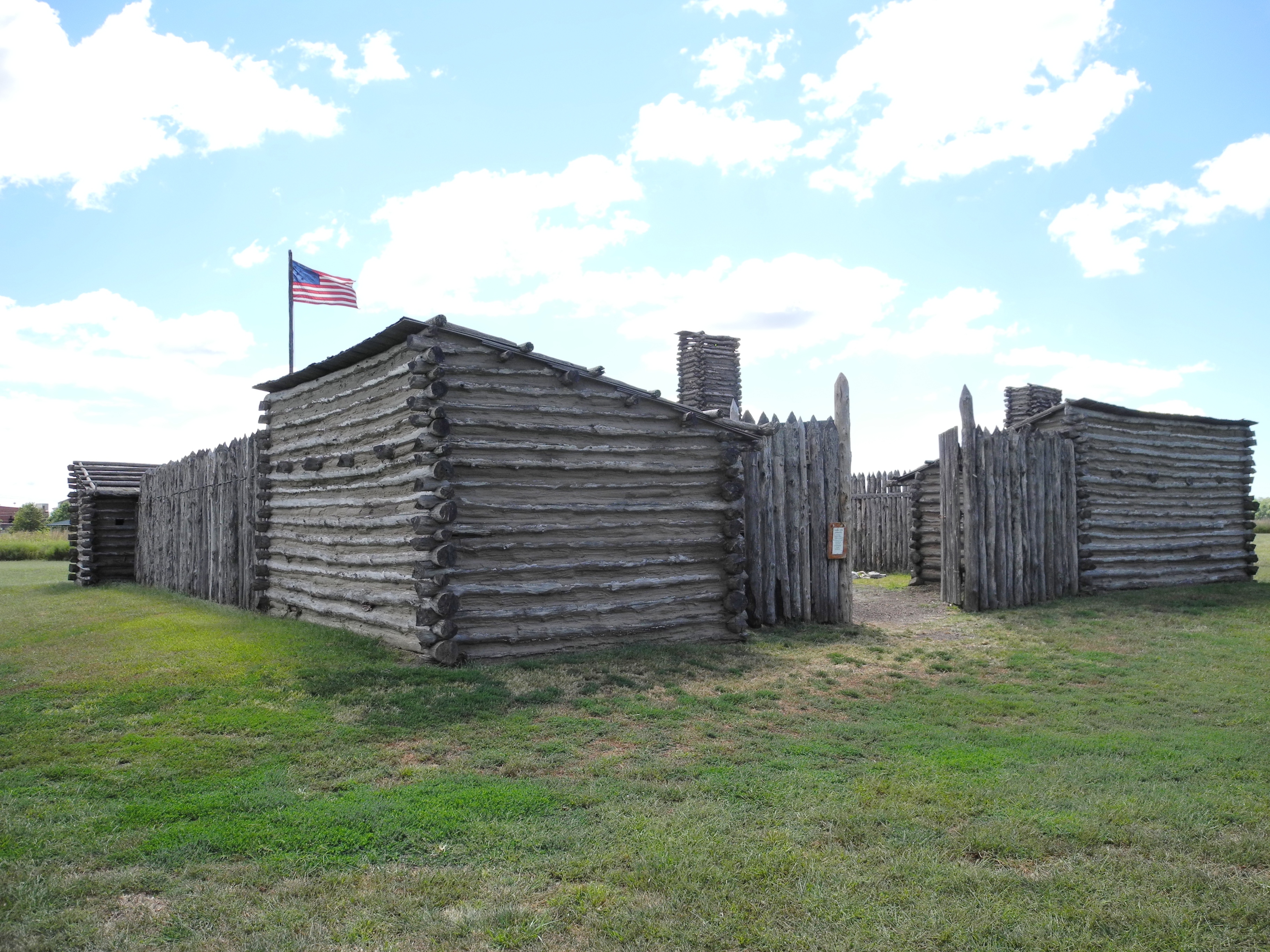|
Lewis And Clark Expedition
The Lewis and Clark Expedition, also known as the Corps of Discovery Expedition, was the United States expedition to cross the newly acquired western portion of the country after the Louisiana Purchase. The Corps of Discovery was a select group of U.S. Army and civilian volunteers under the command of Captain Meriwether Lewis and his close friend Second Lieutenant William Clark. Clark, along with 30 others, set out from Camp Dubois (Camp Wood), Illinois, on May 14, 1804, met Lewis and ten other members of the group in St. Charles, Missouri, then went up the Missouri River. The expedition crossed the Continental Divide of the Americas near the Lemhi Pass, eventually coming to the Columbia River, and the Pacific Ocean in 1805. The return voyage began on March 23, 1806, at Fort Clatsop, Oregon, ending six months later on September 23 of that year. President Thomas Jefferson commissioned the expedition, shortly after the Louisiana Purchase of 1803, to explore and detail as much of ... [...More Info...] [...Related Items...] OR: [Wikipedia] [Google] [Baidu] |
Meriwether Lewis
Meriwether Lewis (August 18, 1774 – October 11, 1809) was an American explorer, soldier, politician, and public administrator, best known for his role as the leader of the Lewis and Clark Expedition, also known as the Corps of Discovery, with William Clark. Their mission was to explore the territory of the Louisiana Purchase, establish trade with, and sovereignty over the natives near the Missouri River, and claim the Pacific Northwest and Oregon Country for the United States before European nations. They also collected scientific data and information on indigenous nations. President Thomas Jefferson appointed him Governor of Upper Louisiana in 1806. He died in 1809 of gunshot wounds, in what was either a murder or suicide. Life and work Meriwether Lewis was born August 18, 1774, on Locust Hill Plantation in Albemarle County, Virginia, Albemarle County, Colony of Virginia, in the present-day community of Ivy, Virginia, Ivy. He was the son of William Lewis, of Welsh ancestry, ... [...More Info...] [...Related Items...] OR: [Wikipedia] [Google] [Baidu] |
Southwestern United States
The Southwestern United States, also known as the American Southwest or simply the Southwest, is a geographic and cultural list of regions of the United States, region of the United States that includes Arizona and New Mexico, along with adjacent portions of California, Colorado, Nevada, Oklahoma, Texas, and Utah. The largest cities by List of metropolitan statistical areas, metropolitan area are Phoenix, Arizona, Phoenix, Las Vegas, El Paso, Texas, El Paso, Albuquerque, and Tucson, Arizona, Tucson. Before 1848, in the historical region of Santa Fe de Nuevo México as well as parts of Alta California and Coahuila y Tejas, settlement was almost non-existent outside of New Mexico's pueblos and Santa Fe de Nuevo México#Regions and municipalities, Spanish or Mexican municipalities. Much of the area had been a part of New Spain and Mexico until the United States acquired the area through the Treaty of Guadalupe Hidalgo in 1848 and the smaller Gadsden Purchase in 1854. While the regio ... [...More Info...] [...Related Items...] OR: [Wikipedia] [Google] [Baidu] |
John Ledyard
John Ledyard (November 1751 – 10 January 1789) was an American explorer and adventurer. Early life Ledyard was born in Groton, Connecticut, in November 1751. He was the first child of Abigail Youngs Ledyard and Capt. John Ledyard Jr, son of Squire John Ledyard Sr. A day or so after the child was born, Capt. John boarded his father's ship and sailed for the West Indies. Three years later Ledyard joined his grandfather in Hartford, Connecticut, where he attended school. His grandfather died just before Ledyard turned 20 (Squire Ledyard died in September 1771; grandson John III was about three months shy of 21 years of age at the Squire's death). Ledyard briefly attended Dartmouth College (which was then only 3 years old), arriving on 22 April 1772. He left for two months without permission in August and September of that year, led a mid-winter camping expedition, and finally abandoned the college for good in May 1773. Memorably, he fashioned his own dugout canoe, and paddle ... [...More Info...] [...Related Items...] OR: [Wikipedia] [Google] [Baidu] |
List Of Ambassadors Of The United States To France
The United States ambassador to France is the official representative of the president of the United States to the president of France. The United States has maintained diplomatic relations with France since the American Revolution. Relations were upgraded to the higher Diplomatic rank, rank of Ambassador in 1893. The diplomatic relationship has continued through France's two empires, three monarchies, and five republics. Since 2006 the ambassador to France has also served as the List of ambassadors of the United States to Monaco, ambassador to Monaco. List of United States chiefs of mission in France Ministers to the Court of Versailles (1778–1792) Relations between the United States and the French Court of Versailles were established in 1778 with the signing of the Treaty of Amity and Commerce (United States–France), Treaty of Amity and Commerce. As a republic, the United States was not entitled to send an ambassador. Instead, relations were maintained at the lower di ... [...More Info...] [...Related Items...] OR: [Wikipedia] [Google] [Baidu] |
Fritz
Fritz is a common German language, German male name. The name originated as a German diminutive of Friedrich (given name), Friedrich or Frederick (given name), Frederick (''Der Alte Fritz'', and ''Stary Fryc'' were common nicknames for King Frederick II of Prussia and Frederick III, German Emperor), as well as of similar names including Fridolin and, less commonly, Francis (given name), Francis. Fritz (Fryc) was also a name given to German troops by Allies soldier similar to the term Tommy Atkins, Tommy. Other common bases for which the name Fritz was used include the surnames Fritsche, Fritzsche, Fritsch, Frisch(e) and Frycz. Below is a list of notable people with the name "Fritz". Surname *Amanda Fritz (born 1958), retired registered psychiatric nurse and politician from Oregon *Al Fritz (1924–2013), American businessman *Ben Fritz (born 1981), American baseball coach *Betty Jane Fritz (1924–1994), one of the original players in the All-American Girls Professional Baseball ... [...More Info...] [...Related Items...] OR: [Wikipedia] [Google] [Baidu] |
Ronda
Ronda () is a Municipalities in Spain, municipality of Spain belonging to the province of Málaga, within the autonomous community of Andalusia. Its population is about 35,000. Ronda is known for its cliffside location and a deep canyon that carries the Guadalevín River and divides the town. It is one of the towns and villages that are included in the Sierra de las Nieves National Park. History Around the city are remains of prehistoric settlements dating to the Neolithic, including the rock art of Cueva de la Pileta. The places of Arunda and Acinipo mentioned by Pliny the Elder, Pliny have been traditionally identified with current Ronda. In the fifth century AD, Ronda was conquered by the Suebi, led by Rechila, being reconquered in the following century by the Eastern Roman Empire, under whose rule Acinipo was abandoned. Later, the Visigothic Kingdom, Visigothic king Liuvigild captured the city. Ronda was part of the Visigoth realm until 713, when it fell to the Umayyad Ca ... [...More Info...] [...Related Items...] OR: [Wikipedia] [Google] [Baidu] |
Lavender
''Lavandula'' (common name lavender) is a genus of 47 known species of perennial flowering plants in the sage family, Lamiaceae. It is native plant, native to the Old World, primarily found across the drier, warmer regions of the Mediterranean Sea, Mediterranean, with an affinity for maritime breezes. Lavender is found on the Iberian Peninsula and around the entirety of the Mediterranean Sea, Mediterranean coastline (including the Adriatic Sea, Adriatic coast, the Balkans, the Levant, and coastal North Africa), in parts of East Africa, Eastern and Southern Africa and the Middle East, as well as in South Asia and on the Indian subcontinent. Many members of the genus are cultivated extensively in temperate climates as ornamental plants for garden and landscape use, for use as culinary herbs, and also commercially for the extraction of essential oils. Lavender is used in traditional medicine and as an ingredient in cosmetics. Description The genus includes annual or short-lived ... [...More Info...] [...Related Items...] OR: [Wikipedia] [Google] [Baidu] |
Miller
A miller is a person who operates a mill, a machine to grind a grain (for example corn or wheat) to make flour. Milling is among the oldest of human occupations. "Miller", "Milne" and other variants are common surnames, as are their equivalents in other languages around the world (" Melnyk" in Russian, Belarusian & Ukrainian, " Meunier" in French, "Müller" or " Mueller" in German, " Mulder" and " Molenaar" in Dutch, "Molnár" in Hungarian, " Molinero" in Spanish, "Molinaro" or "Molinari" in Italian, "Mlinar" in South Slavic languages etc.). Milling existed in hunter-gatherer communities, and later millers were important to the development of agriculture. The materials ground by millers are often foodstuffs and particularly grain. The physical grinding of the food allows for the easier digestion of its nutrients and saves wear on the teeth. Non-food substances needed in a fine, powdered form, such as building materials, may be processed by a miller. Quern-stone Th ... [...More Info...] [...Related Items...] OR: [Wikipedia] [Google] [Baidu] |
Ambrose
Ambrose of Milan (; 4 April 397), venerated as Saint Ambrose, was a theologian and statesman who served as Bishop of Milan from 374 to 397. He expressed himself prominently as a public figure, fiercely promoting Roman Christianity against Arianism and paganism. He left a substantial collection of writings, of which the best known include the ethical commentary ''De officiis ministrorum'' (377–391), and the exegetical (386–390). His preaching, his actions and his literary works, in addition to his innovative musical hymnography, made him one of the most influential ecclesiastical figures of the 4th century. Ambrose was serving as the Roman governor of Aemilia-Liguria in Milan when he was unexpectedly made Bishop of Milan in 374 by popular acclamation. As bishop, he took a firm position against Arianism and attempted to mediate the conflict between the emperors Theodosius I and Magnus Maximus. Tradition credits Ambrose with developing an antiphonal chant, known as Ambros ... [...More Info...] [...Related Items...] OR: [Wikipedia] [Google] [Baidu] |
Indigenous Peoples Of The Americas
In the Americas, Indigenous peoples comprise the two continents' pre-Columbian inhabitants, as well as the ethnic groups that identify with them in the 15th century, as well as the ethnic groups that identify with the pre-Columbian population of the Americas as such. These populations exhibit significant diversity; some Indigenous peoples were historically hunter-gatherers, while others practiced agriculture and aquaculture. Various Indigenous societies developed complex social structures, including pre-contact monumental architecture, organized city, cities, city-states, chiefdoms, state (polity), states, monarchy, kingdoms, republics, confederation, confederacies, and empires. These societies possessed varying levels of knowledge in fields such as Pre-Columbian engineering in the Americas, engineering, Pre-Columbian architecture, architecture, mathematics, astronomy, History of writing, writing, physics, medicine, Pre-Columbian agriculture, agriculture, irrigation, geology, minin ... [...More Info...] [...Related Items...] OR: [Wikipedia] [Google] [Baidu] |




